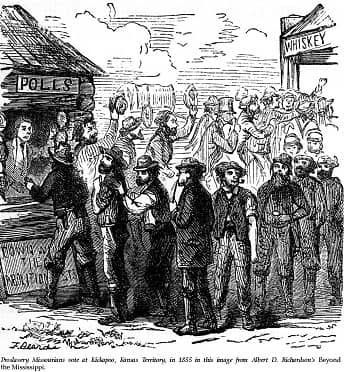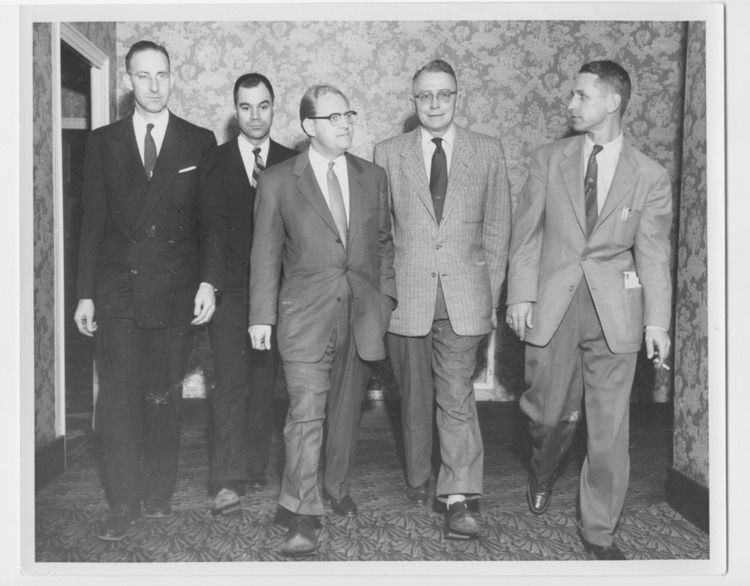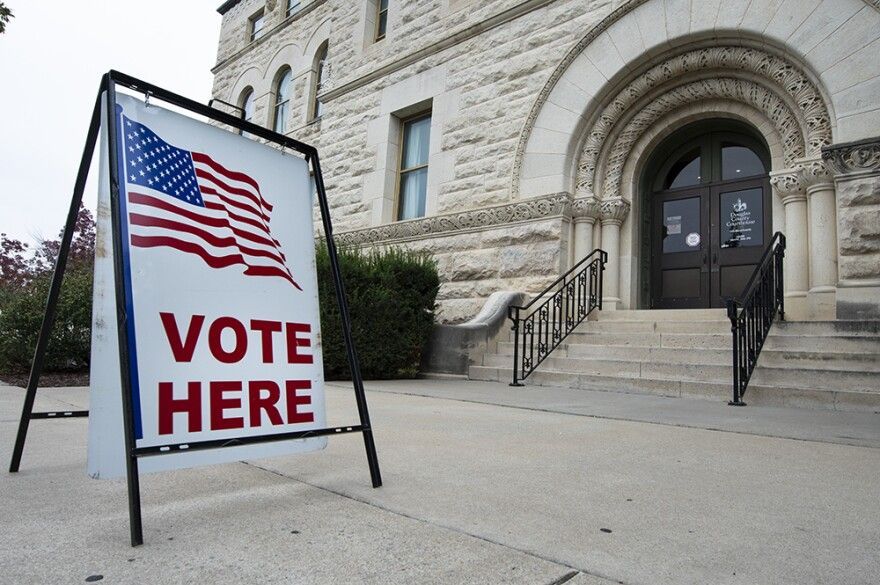Supreme Court Selection Process

Kansans will face a major decision in August 2026: whether to change the way the state’s Supreme Court justices are selected. Lawmakers have placed a constitutional amendment on the ballot that would end the current merit-based system — in place since 1958 — and return Kansas to direct elections for its highest court.
This debate has been building for years, with supporters arguing that voters deserve a direct say in who serves on the Supreme Court, while opponents warn that attorneys are best qualified to keep politics out of the courtroom. The outcome of this vote will shape the future of Kansas courts for decades to come.
We created this resource to give you the full picture. Here you’ll find:
- A clear explanation of how the current selection process works
- A straightforward summary of what the proposed amendment would change
- A timeline of key moments in Kansas judicial history, including the 1956 “Triple Play” that led to the state’s last major reform
Our commitment is to present the facts. We believe Kansans make the best decisions when they have clear, accurate, and unbiased information.
current process
Bar-Controlled Selection
Since 1958, Kansas has used "bar-controlled" or "merit selection" system, often called the “Missouri Plan,” to choose Supreme Court justices.
How It Works:
- Nominating Commission: A nine-member Kansas Supreme Court Nominating Commission reviews all applicants.
- Five lawyer members are elected by attorneys in each congressional district.
- Four non-lawyer members are appointed by the governor.
- A chair, elected by attorneys statewide, leads the commission.
- Finalists to the Governor: When there is a vacancy, the commission interviews candidates and submits three finalists to the governor.
- Governor’s Choice: The governor must select one of the three within 60 days. If the governor does not act, the chief justice makes the appointment.
- Retention Elections: After serving one year, justices face a statewide yes/no retention vote every six years. Voters can remove a justice, but there are no opposing candidates.
This system was adopted after the 1956 “Triple Play” scandal and was intended to promote judicial independence and ensure qualified candidates reach the bench.
PROPOSED PROCESS
Return to Direct Elections
The constitutional amendment on the August 2026 ballot would abolish the Nominating Commission and return Kansas to direct, statewide elections for Supreme Court justices — similar to how they were selected from 1861 to 1958.
How It Would Work:
- Direct Elections: Kansans would vote directly for Supreme Court justices on the ballot, just like governors or other statewide officials.
- No Commission: The nine-member nominating commission would be eliminated.
- Candidate Campaigning: Candidates could campaign for votes, publicly state their positions, and be subject to public disclosure rules.
- Staggered Terms: Justices would continue to serve six-year terms, but elections would be staggered so that not all seven justices are on the ballot at once.
- Vacancies: Interim vacancies would be filled through an election process established by lawmakers.
Supporters argue this reform puts the power back in voters’ hands and increases accountability.
Opponents warn that elections could make the courts more partisan and allow money and that attorneys are best qualified to keep politics out of the courtroom.
Early Period (1861–1958)
Direct Elections of Supreme Court Justices
When Kansas became a state in 1861, its constitution required that Supreme Court justices be elected in partisan elections, just like governors and legislators.
Justices campaigned on party ballots, raised money, and made public pledges about how they’d rule on issues.
The governor could fill vacancies by appointment until the next election, meaning politics played a constant role.

1956 Triple Play
The most dramatic moment came in late 1956 in what became known as the “Triple Play.”
- Governor Fred Hall had lost his primary for re-election. Just days before leaving office, he resigned.
- Lt. Governor John McCuish became governor and immediately appointed Hall to the Kansas Supreme Court.
- To many Kansans, this looked like a backroom deal to secure Hall a lifetime appointment, undermining public confidence in the judiciary.

1958 Constitutional Amendment: Bar-Controlled Plan
The "Missouri Plan"
In 1958 the Kansas Legislature proposed a constitutional amendment to overhaul how justices were selected.
In 1958, Kansas voters approved the merit selection system, also known as the "Missouri Plan".
This created the Kansas Supreme Court Nominating Commission, a nine-member body (five lawyers elected by lawyers, four non-lawyers appointed by the governor) to screen candidates and send a shortlist to the governor.
The goal: reduce political influence, improve qualifications of justices, and keep courts independent.

2026 Proposed Constitutional Amendment
Return to Direct Elections
In August 2026, Kansans will vote on a major change to how Supreme Court justices are selected. The proposed constitutional amendment would abolish the current merit-based nominating commission and return Kansas to a system of direct elections for Supreme Court justices, similar to how the process worked prior to 1958.

Frequently asked questions about the Kansas Supreme Court Selection Process
How are Supreme Court Justices Selected in Kansas?
When a vacancy occurs on the Kansas Supreme Court, a nine-member nominating commission selects three finalists from a pool of applicants. The commission includes five attorneys elected by the Kansas Bar Association and four non-attorneys appointed by the Governor. [1]
The Governor must choose one of the three nominees. If the Governor declines, the Chief Justice of the Kansas Supreme Court makes the appointment. [2]
How many other states have this model?
According to the non-partisan Ballotpedia, Kansas is the only state that uses a bar-controlled commission—where attorneys elected by the state bar hold a majority of seats—to select Supreme Court nominees. [3]
However, 20 other states use some form of a nominating commission in their selection process. These commissions vary:
10 states have governor-controlled commissions
12 states use hybrid commissions with no single group in control
What is the most common selection method for State Supreme Court Justices in the United States?
The most common method is election.
- 13 states use nonpartisan elections.
- 8 states use partisan elections.
What do supporters of the way Kansas Supreme Court Justices are chosen say?
Supporters of the current model, which they refer to as “merit selection” argue that lawyers are best equipped to select members to the State’s Highest Court. [4] They also contend that the nomination committee helps insulate justices from political influence, allowing decisions to be based on law rather than politics.[5]
What do critics of the way Kansas Supreme Court Justices are chosen say?
Critics argue that the current system is “undemocratic” because it gives members of the state bar disproportionate influence over the nomination process. They note that Kansas is an outlier in having a “bar-controlled commission”, noting that lawyers make up just 0.03% of the state’s population, yet have the ability to effectively shape an entire branch of the state’s government. [6]
Sources
[1] Supreme Court Nominating Commission - KS Courts
[2] Kansas Secretary of State | Publications | Kansas Constitution | Article 3 - Judicial
[3] Assisted appointment (Bar-controlled commission) - Ballotpedia
[5] Kansas Supreme Court voting may change; here’s what you should keep in mind - ACLU of Kansas
[6] Readers urge changes in Kansas high court picks, government | Opinion
The Amendment
The measure would amend sections 5, 8, and 15 of Article 3 of the state constitution. The following underlined text would be added, and struck-through text would be deleted:
§ 5. Selection of justices of the supreme court. The citizens of Kansas who are qualified electors shall have the right to elect the justices of the supreme court. The rules applicable for such elections and the designation of position numbers shall be provided by law. Justice positions 1, 2 and 3 shall be elected at the general election in November of 2028, justice positions 4 and 5 in November of 2030 and justice positions 6 and 7 in November of 2032, and every six years thereafter, respectively. Any vacancy occurring on the supreme court for an unexpired term shall be filled at the next even-year election for the remainder of such term by election as provided by law. (a) Any vacancy occurring in the office of any justice of the supreme court and any position to be open thereon as a result of enlargement of the court, or the retirement or failure of an incumbent to file his declaration of candidacy to succeed himself as hereinafter required, or failure of a justice to be elected to succeed himself, shall be filled by appointment by the governor of one of three persons possessing the qualifications of office who shall be nominated and whose names shall be submitted to the governor by the supreme court nominating commission established as hereinafter provided.
(b) In event of the failure of the governor to make the appointment within sixty days from the time the names of the nominees are submitted to him, the chief justice of the supreme court shall make the appointment from such nominees. (c) Each justice of the supreme court appointed pursuant to provisions of subsection (a) of this section shall hold office for an initial term ending on the second Monday in January following the first general election that occurs after the expiration of twelve months in office. Not less than sixty days prior to the holding of the general election next preceding the expiration of his term of office, any justice of the supreme court may file in the office of the secretary of state a declaration of candidacy for election to succeed himself. If a declaration is not so filed, the position held by such justice shall be open from the expiration of his term of office. If such declaration is filed, his name shall be submitted at the next general election to the electors of the state on a separate judicial ballot, without party designation, reading substantially as follows:
"Shall _____________________________________________ (Here insert name of justice.) ___________________________________________________ (Here insert the title of the court.)
be retained in office?"
If a majority of those voting on the question vote against retaining him in office, the position or office which he holds shall be open upon the expiration of his term of office; otherwise he shall, unless removed for cause, remain in office for the regular term of six years from the second Monday in January following such election. At the expiration of each term he shall, unless by law he is compelled to retire, be eligible for retention in office by election in the manner prescribed in this section.
(d) A nonpartisan nominating commission whose duty it shall be to nominate and submit to the governor the names of persons for appointment to fill vacancies in the office of any justice of the supreme court is hereby established, and shall be known as the "supreme court nominating commission." Said commission shall be organized as hereinafter provided.
(e) The supreme court nominating commission shall be composed as follows: One member, who shall be chairman, chosen from among their number by the members of the bar who are residents of and licensed in Kansas; one member from each congressional district chosen from among their number by the resident members of the bar in each such district; and one member, who is not a lawyer, from each congressional district, appointed by the governor from among the residents of each such district.
(f) The terms of office, the procedure for selection and certification of the members of the commission and provision for their compensation or expenses shall be as provided by the legislature.
(g) No member of the supreme court nominating commission shall, while he is a member, hold any other public office by appointment or any official position in a political party or for six months thereafter be eligible for nomination for the office of justice of the supreme court. The commission may act only by the concurrence of a majority of its members.
§ 8. Prohibition of political activity by justices and certain judges. No justice of the supreme court who is appointed or retained under the procedure of section 5 of this article, nor any judge of the district court holding office under a nonpartisan method authorized in subsection (a) of section 6 of this article, shall directly or indirectly make any contribution to or hold any office in a political party or organization or take part in any political campaign, except when such judge is a candidate for election to a position on an appellate court.
§ 15. Removal of justices and judges. Justices of the supreme court may be removed from office by impeachment and conviction as prescribed in article 2 of this constitution. In addition to removal by impeachment and conviction, justices may be retired after appropriate hearing, upon certification to the governor, by the supreme court nominating commission that such justice is so incapacitated as to be unable to perform adequately his duties. Other judges shall be subject to retirement for incapacity, and to discipline, suspension and removal for cause by the supreme court after appropriate hearing.
